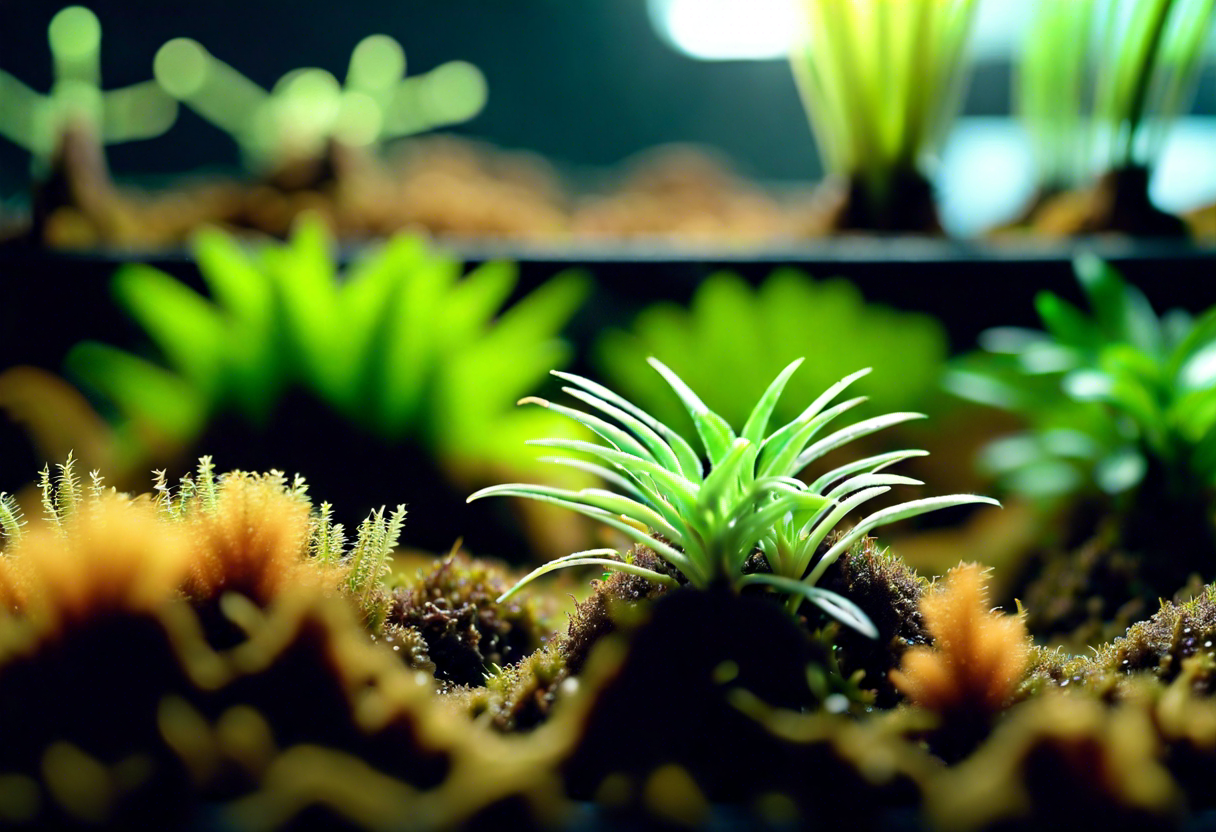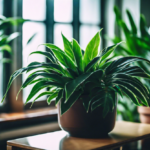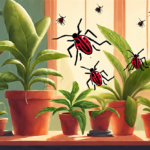The Benefits of Peat Moss for Indoor Plants
When it comes to indoor gardening, finding the right growing medium is crucial for the health and vitality of your plants. One popular option that many gardeners swear by is peat moss. This organic material, derived from decomposed sphagnum moss, offers a multitude of benefits that can help your indoor plants thrive.
One of the key advantages of using peat moss for indoor plants is its excellent water retention properties. Peat moss has a high capacity for holding water, allowing it to retain moisture for extended periods. This is particularly beneficial for indoor plants, as it can help prevent over-drying of the soil and maintain consistent moisture levels.
Furthermore, peat moss acts as an excellent source of aeration for the plant roots. Its fibrous structure promotes the circulation of air and helps prevent soil compaction. Adequate air circulation in the root zone is essential for healthy plant growth as it promotes the exchange of gases and prevents the buildup of harmful anaerobic conditions.
Another advantage of using peat moss is its ability to enhance soil structure. When incorporated into the growing medium, peat moss helps improve soil texture and creates a favorable environment for root development. It increases the porosity of the soil, allowing for better drainage and preventing waterlogging, which can lead to root rot.
In addition to its physical properties, peat moss also offers a range of nutrients that can benefit indoor plants. Although peat moss itself is relatively low in essential nutrients, it has the capacity to absorb and retain nutrients from fertilizers and organic matter. This means that when combined with a balanced fertilization regime, peat moss can contribute to the overall nutrient uptake of your indoor plants.
Furthermore, peat moss has a slightly acidic pH, which makes it ideal for acid-loving plants such as azaleas, ferns, and hydrangeas. The acidity of peat moss can help maintain an optimal pH level in the soil, ensuring that your plants have access to the nutrients they need for healthy growth.
It is important to note that while peat moss offers numerous benefits for indoor plants, it is not without its drawbacks. One concern is its sustainability and environmental impact. Peat moss harvesting involves the excavation of delicate wetland ecosystems, which can disrupt natural habitats and contribute to climate change. It is crucial to consider sustainable alternatives, such as coconut coir or compost, which offer similar benefits without the same environmental drawbacks.
Incorporating peat moss into your indoor gardening routine can provide several benefits for your plants. Its water retention properties, ability to enhance soil structure, and potential nutrient contributions make it a valuable addition to any indoor garden. However, it is important to weigh these benefits against the environmental impact of peat moss harvesting and consider sustainable alternatives. By choosing the right growing medium, you can create a thriving indoor garden that promotes the health and vitality of your plants.
The Proper Way to Prepare Peat Moss for Indoor Plants
Peat moss is a popular organic material used in gardening, particularly for its ability to retain moisture and enhance soil structure. When it comes to using peat moss for indoor plants, proper preparation is key to ensure optimal growth and health. In this article, we will walk you through the steps to prepare peat moss for your indoor plants.
The first step is to select high-quality peat moss. You want to choose a brand that is free from additives or chemicals, as these can be harmful to your plants. Look for peat moss that has a fine texture and is slightly damp, but not overly wet. Too much moisture can lead to mold growth and aeration issues.
Once you have your peat moss, you will need to rehydrate it. This is important because peat moss is often sold in a dehydrated state to reduce shipping costs. To rehydrate, simply place the moss in a large container or bucket and add water. Allow the peat moss to soak for several hours or until it has absorbed the water and is fluffed up.
After rehydration, you should squeeze out any excess water from the peat moss. It should be damp but not dripping wet. This step is crucial to avoid overwatering your indoor plants, as peat moss can retain a significant amount of moisture. Take a handful of the moss and gently squeeze it to test its moisture level.
Next, you can incorporate the peat moss into your potting mix or use it as a top dressing for your indoor plants. If you are creating your own potting mix, combine the peat moss with other organic materials such as compost, perlite, or vermiculite for added nutrients and improved drainage.
When applying peat moss as a top dressing, sprinkle a thin layer around the base of your plants. This will help to prevent evaporation and retain moisture in the soil. Be careful not to bury the stems of your indoor plants with the peat moss, as this can lead to rotting.
It is important to note that peat moss has a slightly acidic pH, which may not be suitable for all plants. Before using peat moss, check the pH requirements of your indoor plants. If necessary, you can amend the pH by adding lime or other pH-adjusting materials to the potting mix.
Proper preparation of peat moss is essential for its effective use with indoor plants. By following these steps, you can ensure that your plants receive the full benefits of peat moss, including improved water retention and nutrient availability. peat moss into your indoor gardening routine can contribute to healthier and more vibrant plants in your home.
The Role of Peat Moss in Soil Water Retention
Peat moss is a popular organic material that is widely used in gardening, particularly for its ability to improve soil water retention. Many indoor gardeners rely on peat moss to create the perfect growing conditions for their plants. In this article, we will explore the important role that peat moss plays in retaining water in the soil.
Peat moss, also known as sphagnum moss, is a natural fibrous material that is harvested from bogs and marshes. It has a unique structure that enables it to absorb and retain large amounts of water. When incorporated into the soil, peat moss acts like a sponge, soaking up water and slowly releasing it to the plant’s roots.
One of the key benefits of peat moss for indoor plants is its ability to prevent water runoff. When water is applied to the soil surface, peat moss absorbs it, preventing it from flowing away or evaporating quickly. This allows the water to penetrate deeper into the soil, reaching the plant’s roots where it is needed most.
Furthermore, peat moss helps to create a well-draining soil environment. It improves the soil’s structure by loosening compacted soil, allowing for better water infiltration and root growth. By enhancing soil aeration, peat moss prevents waterlogging and reduces the risk of root rot.
Not only does peat moss retain water, but it also helps to regulate moisture levels in the soil. During periods of heavy rainfall or overwatering, peat moss absorbs excess water, preventing waterlogging and nutrient leaching. On the other hand, during dry periods, it releases stored water to the plant’s roots, ensuring they remain hydrated.
In addition to its water retention properties, peat moss also contributes to the overall fertility of the soil. It contains a range of organic matter, including decomposed plants and various microorganisms. As peat moss breaks down over time, it releases essential nutrients into the soil, promoting healthier plant growth.
When using peat moss for indoor plants, it is important to properly incorporate it into the soil. Before planting, mix peat moss with the existing soil in a ratio of 1:1 or as recommended for your specific plant’s needs. Ensure that the peat moss is evenly distributed throughout the root zone to maximize its water retention capabilities.
Peat moss plays a vital role in enhancing soil water retention for indoor plants. Its ability to absorb and retain water, prevent runoff, and regulate moisture levels make it an excellent choice for improving plant health and growth. peat moss into your indoor gardening routine can significantly benefit your plants and help create a thriving green space.
The Nutrient-Rich Qualities of Peat Moss for Indoor Plants
Exploring the Nutrient-Rich Qualities of Peat Moss for Indoor Plants
Peat moss is a widely used organic material in indoor gardening due to its numerous nutrient-rich qualities. Derived from the decomposition of sphagnum moss, peat moss offers several benefits that can significantly enhance the growth and health of indoor plants.
One of the essential qualities of peat moss is its ability to retain water effectively. When incorporated into potting mixtures, peat moss acts as a sponge, absorbing and holding moisture. This characteristic is particularly advantageous for indoor plants as it helps maintain adequate hydration levels, preventing both underwatering and overwatering. The superior water retention of peat moss ensures that the plants’ roots have constant access to moisture, reducing the risk of drought stress and promoting healthy growth.
Moreover, peat moss has excellent aeration properties. Its light and fluffy texture allow for proper air circulation within the soil, which is crucial for the root systems of indoor plants. Well-aerated roots facilitate the absorption of oxygen and essential nutrients, promoting robust growth and overall plant vigor. By incorporating peat moss into potting mixtures, indoor gardeners can create an optimal environment for their plants’ roots to thrive.
Additionally, peat moss is an excellent source of organic matter that enriches the soil. It contains a range of beneficial nutrients, including nitrogen, phosphorus, and potassium, which are essential for plant growth. These nutrients are slowly released over time, providing a sustainable and long-lasting source of nourishment for indoor plants. The organic matter in peat moss also improves the soil structure by promoting aggregation, creating a more favorable environment for root development and nutrient uptake.
Another significant advantage of using peat moss is its acidic pH level. Many indoor plants, such as ferns, orchids, and azaleas, thrive in acidic conditions. Peat moss’s naturally acidic nature helps create an environment that suits the preferences of these acid-loving plants. By incorporating peat moss into the potting mix, indoor gardeners can mimic the plants’ natural habitat and provide them with the optimal conditions for growth and development.
It is worth mentioning that while peat moss offers numerous benefits for indoor plants, it is important to consider the environmental impact of its harvesting. Peat moss is typically obtained from peatlands, which play a crucial role in carbon sequestration and biodiversity conservation. Unsustainable harvesting practices can disrupt these delicate ecosystems. As a more sustainable alternative, eco-conscious gardeners can consider using peat-free alternatives, such as coconut coir or compost, which offer similar water retention and nutrient-rich properties without the negative environmental impact.
Peat moss is a nutrient-rich organic material that provides several advantages for indoor plants. Its water retention capabilities, aeration properties, and enrichment of soil nutrients make it an ideal choice for promoting healthy growth and vigor in indoor gardens. However, it is essential to consider the environmental impact of peat moss harvesting and explore sustainable alternatives for a more eco-friendly approach to indoor gardening.
The Environmental Impact of Peat Moss Harvesting and Sustainable Alternatives
Peat moss is a popular choice among gardeners and indoor plant enthusiasts due to its excellent water retention and nutrient-rich qualities. However, the method of harvesting peat moss has raised concerns about its environmental impact. In this article, we will explore the environmental issues associated with peat moss harvesting and discuss sustainable alternatives.
One of the primary concerns surrounding peat moss harvesting is its impact on natural ecosystems. Peatlands, where peat moss is found, are unique and valuable habitats that support various plant and animal species. Harvesting peat moss involves removing the top layer of peat, which disrupts the delicate balance of these ecosystems. This disturbance can lead to the loss of biodiversity and disrupt the natural processes that occur in peatlands.
Another environmental concern is the release of carbon dioxide (CO2) during peat moss extraction. Peatlands store vast amounts of carbon, and when peat moss is harvested, the carbon that has accumulated over thousands of years is released into the atmosphere. This contributes to greenhouse gas emissions and climate change. In fact, it is estimated that peatlands represent approximately 30% of the global soil carbon stock.
To address these environmental issues, it is crucial to consider sustainable alternatives to peat moss. One such alternative is coconut coir, which is made from the fibrous husk of coconuts. Coconut coir has similar water retention properties to peat moss and can be used as a substitute in potting mixes. Since coconut coir is a by-product of the coconut industry, its use reduces waste and promotes sustainability.
Another sustainable alternative is compost, which is created from organic matter such as kitchen scraps, yard waste, and plant matter. Compost improves soil structure, retains moisture, and provides essential nutrients for plants. By using compost instead of peat moss, gardeners can reduce their carbon footprint and contribute to a more sustainable gardening practice.
Additionally, incorporating vermiculite or perlite into potting mixes can help improve drainage and aeration, without relying solely on peat moss. These materials are lightweight and provide the necessary air pockets for plant roots to access oxygen.
While peat moss offers several benefits for indoor plants, its harvesting methods can have significant environmental consequences. To minimize these impacts, it is essential to explore sustainable alternatives such as coconut coir, compost, vermiculite, and perlite. By making conscious choices in our gardening practices, we can help protect the environment and create a more sustainable future.
Conclusion
Utilizing peat moss for indoor plants provides numerous benefits that help ensure their healthy growth and overall well-being. Through its exceptional water retention properties, peat moss effectively regulates moisture levels in the soil, preventing both over and under-watering. This feature is particularly advantageous for indoor plants, as it allows them to thrive in controlled environments where water supply can be limited. Additionally, peat moss offers a rich source of essential nutrients, improving soil fertility and supporting optimal plant development.
To effectively prepare peat moss for indoor plants, it is crucial to follow a few key steps. First, ensure you purchase high-quality peat moss from reliable sources that prioritize sustainable harvesting practices. Before using it, moisten the peat moss by gradually adding water until it reaches a consistently damp texture. This process aids in properly hydrating the moss and eliminates any dust or dry particles that may hinder its performance. Incorporate the moistened peat moss into the potting mix at a ratio of 1:2 or as recommended for specific plant requirements. By following these steps, you can maximize the benefits of peat moss for indoor plants.
The role of peat moss in soil water retention cannot be overstated. Due to its composition, peat moss possesses a remarkable ability to absorb and hold water, allowing it to slowly release moisture as the plant requires. This characteristic proves particularly valuable in indoor environments where limited access to natural rainfall necessitates a more controlled approach to watering. By retaining moisture, peat moss significantly reduces the risk of overwatering, a common problem that can lead to root rot and other fungal diseases. Its water management capabilities effectively support the healthy growth and longevity of indoor plants.
Moreover, peat moss boasts valuable nutrient-rich qualities that promote the flourishing growth of indoor plants. While peat moss itself does not provide an abundance of nutrients, it acts as an ideal medium for holding and releasing essential plant nutrients. Its porous structure facilitates the absorption and retention of fertilizers, ensuring that these nutrients are gradually released to the plant’s roots. This quality greatly enhances the root system’s ability to access the necessary elements for robust growth and development. By incorporating peat moss into the potting mix, indoor plants can benefit from enhanced nutrient availability and improved overall health.
While peat moss offers numerous advantages, it is essential to consider its environmental impact. Peat bogs, the natural habitat of peat moss, play a crucial role in carbon sequestration and preserving biodiversity. Unsustainable harvesting practices, such as the draining and excavation of peat bogs, can result in significant ecological damage. Fortunately, sustainable alternatives to peat moss, such as coir or compost, are becoming increasingly available. These alternatives provide similar benefits while being more environmentally friendly. Considering the environmental impact, it is crucial to opt for sustainable alternatives whenever possible to protect our precious ecosystems.
Peat moss is a valuable resource for indoor plant enthusiasts. Its water retention properties, nutrient-rich qualities, and ease of use make it a highly effective medium for promoting healthy growth and ensuring the well-being of indoor plants. By following proper preparation techniques and considering sustainable alternatives, gardeners can harness the benefits of peat moss while minimizing its environmental impact. peat moss into your indoor gardening routine is a step towards beautiful and thriving plants, enabling you to enjoy the peace and serenity of nature within your home.


